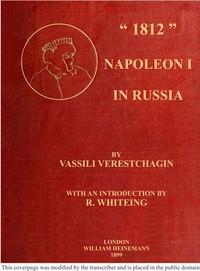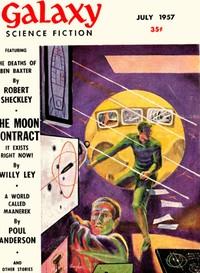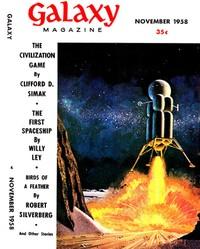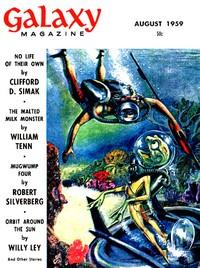Read this ebook for free! No credit card needed, absolutely nothing to pay.
Words: 83416 in 22 pages
This is an ebook sharing website. You can read the uploaded ebooks for free here. No credit cards needed, nothing to pay. If you want to own a digital copy of the ebook, or want to read offline with your favorite ebook-reader, then you can choose to buy and download the ebook.


: 1812 Napoleon I in Russia by Vereshchagin Vasil Vasil Evich - Napoleonic Wars 1800-1815 Campaigns Russia; Russia History 1801-1917
"1812" NAPOLEON I IN RUSSIA
INTRODUCTION
The following pages are not offered to the reader as a history of the invasion of Russia by Napoleon. They are but the statement of the basis of observation on which M. Verestchagin has founded his great series of pictures illustrative of the campaign. These pictures are now to be exhibited in this country, and the painter has naturally desired to show us from what point of view he has approached the study of his subject--one of the greatest subjects in the whole range of history--especially for a Russian artist. The point of view is--inevitably in his case--that of the Realist; and this consideration gives unity to the conception of his whole career and endeavour. He has ever painted war as it is, and therefore in its horrors, as one of its effects, though not necessarily as an effect sought in and for itself. He has tried to be "true" in all his representations of the battle-field. His work may thus be said to constitute a powerful plea in support of the Tsar's Rescript to the Nations in favour of peace. My meaning will be best illustrated by a short sketch of M. Verestchagin and his work, as painter, as soldier, and as traveller.
He was born in the province of Novgorod, in 1842, of a well-to-do family of landowners. The son wished to be an artist; the father wished to make him an officer of marines. As the shortest way out of the difficulty, he became both. He passed his work-hours at the naval school, and his play-hours at a school of design, working at each so well that he left the naval school as first scholar, and eventually won a silver medal at the Academy of Fine Arts. He entered the service, but only for a short time, and he was still three years under twenty when he quitted it to devote himself wholly to art.
He was a hard-working student, though he always showed a strong disposition to insist on working in his own way. When G?r?me sent him to the antique, he was half the time slipping away to nature. He played truant from the Athenian marbles to flesh and blood. In the meantime he was true to the instinct--as yet you could hardly call it a principle--of wandering from the beaten track in search of subjects. Every vacation was passed, not at Asni?res or Barbizon, but in the far east of Europe, or even in Persia, among those ragged races not yet set down in artistic black and white. He had been on the borders of a quite fresh field of observation in these journeys; and he was soon to enter it for a full harvest of new impressions. It was in 1867; Russia was sending an army into Central Asia, to punish the marauding Turkomans for the fiftieth time, and General Kauffman, who commanded it, invited the painter to accompany him as an art volunteer. He was not to fight, but simply to look on. It was the very thing; Verestchagin at once took service on these terms with the expedition, and in faithfully following its fortunes, with many an artistic reconnaissance on his own account, he saw Asia to its core.
He returned from a second Asiatic journey to settle at Munich for three years; and here he built his first "open-air studio." "If you are to paint out-door scenes," he says, "your models must sit in the open;" and so he fashioned a movable room on wheels, running on a circular tramway, and open to sun and air on the side nearest the centre of the circle, where the model stood. The artist, in fact, worked in a huge box with one side out, while the thing he saw was in the full glare of day; and by means of a simple mechanical contrivance he made his room follow the shifting light.
After a long rest at Munich, he was impatient for action once more, and in 1873 he set off for British India.
Verestchagin filled one entire exhibition with his Indian studies. They form a definite part of his collection, a section of his life-work. Amazing studies they are. The end of his sojourn coincided with the visit of the Prince of Wales, and he saw India both at its best and at its worst. In one immense canvas he has represented the royal entry into Jeypore, the Prince and his native entertainer on a richly-caparisoned elephant, and a long line of lesser magnates similarly mounted in the rear. A scene of prayer in a mosque is noble in feeling, and it exhibits an amazing mastery of technique. The Temple of Indra, the Caves of Ellora--all the great show-places--are there, with their furniture of priests, deities, monsters, and men-at-arms. He made a prodigious journey, from St. Petersburg by Constantinople to Egypt, Hindostan, the Himalayas, and Thibet.
This incident nearly finished Verestchagin's artistic career. He lay between life and death for weeks, but a devoted Russian nurse brought him round. Of course he went back to work again as soon as he could move, and in one way or other saw and painted nearly all of the campaign, especially Shipka, and the final rush on Constantinople.
De Lonlay gives us a characteristic picture of Verestchagin at this time.
As a war-painter Verestchagin is a great moralist, and he is a great moralist because he is quite sincere. He paints exactly what he sees on the battle-field, and he is far in advance of the French, who are the fathers of this species of composition, in his rendering of the truth, the whole truth, and nothing but the truth, about this bloody sport of kings. There was a whole wide world of difference in spirit between his little military gallery and the big one at Versailles. The earlier Frenchmen give us pretty uniforms, a monarch prancing on his steed in the moment of victory, an elegantly wounded warrior or two in the foreground, obviously in the act of crying, "Vive la France!" a host in picturesque flight, a host in picturesque pursuit, waving banners, and a great curtain of smoke to hide the general scene of butchery, with supplementary puffs for every disgusting detail. Verestchagin's manner, on the contrary, passing like a breeze of wholesome truthfulness, lifts this theatrical vapour, and shows us what is below--men writhing out their lives in every species of agony by shot and bayonet wounds, by the dry rot of fever, by the wet rot of cold and damp; and finding their last glance to heaven intercepted by the crows or the vultures, waiting for a meal. All this is very shocking, but looked at in the right way it is supremely moral.
His work is his biography. He has lived every one of his pictures, and he has often had to study at almost the cost of his life. All that he represents he has seen; all that he relates with his pencil he has lived. These pictures are just so many chapters detached from his history. They are the work of an artist of an exceptional nature; and are worthy of a book written on the critical method of Sainte-Beuve, a book wherein the man would occupy a place at least as considerable as the work itself; for the one and the other are inseparable. He is the first Russian painter who has given his countrymen a true impression of war--something besides those official pictures where victory is displayed and never defeat. Even when he paints victory he never separates it from its sadness, its ruin, its misery, its mourning beyond relief. I seem to have always before my eyes, as in a dream, that pyramid of piled-up skulls which he met with somewhere in his wanderings, and of which he has made one of his most striking pictures. He wrote underneath it, "Dedicated to the conquerors."
Free books android app tbrJar TBR JAR Read Free books online gutenberg
More posts by @FreeBooks

: Growing up on Big Muddy by De Vet Charles V Turpin Illustrator - Science fiction; Short stories; Extraterrestrial beings Fiction; Diseases Fiction; Human-alien encounters Fiction; Explorers Fiction; Extrasolar planets Fiction Science Fiction


: People Soup by Arkin Alan Johnson Illustrator - Science fiction; Short stories; Siblings Fiction; Children Fiction; Experiments Fiction Science Fiction






